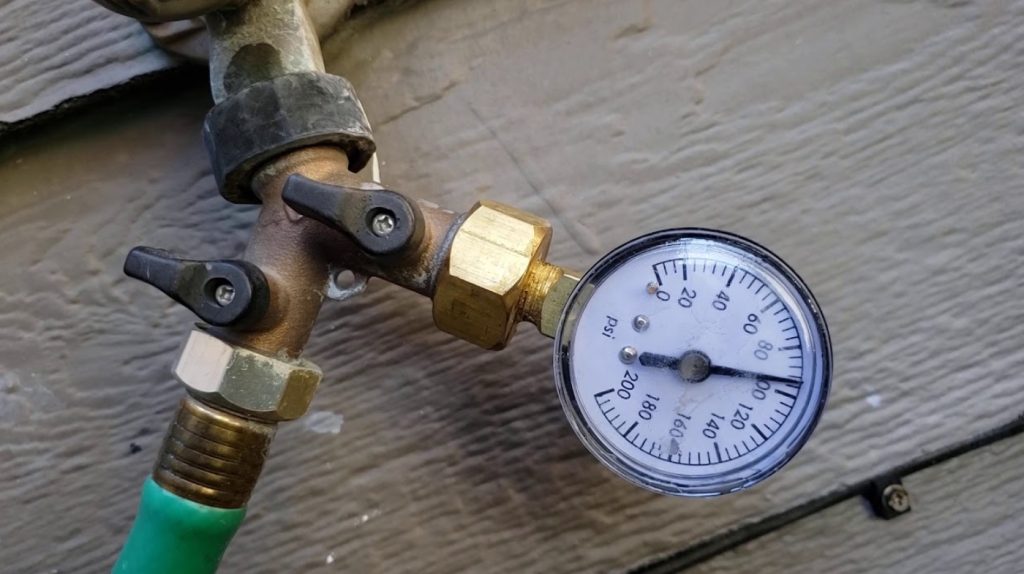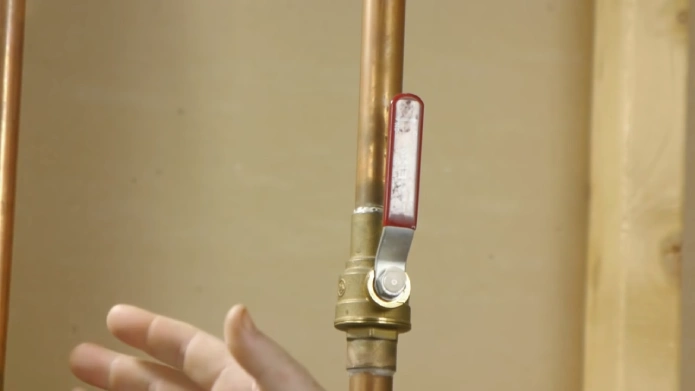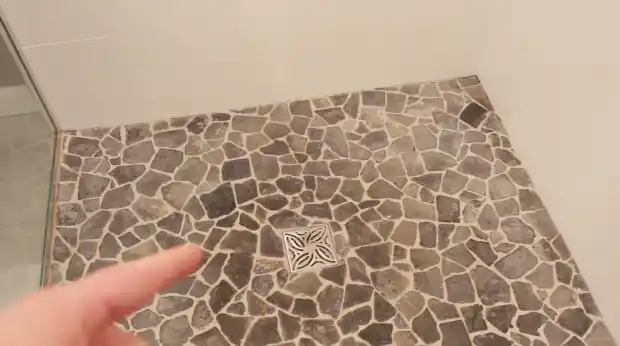Last Updated on May 28, 2025
Your water pressure fluctuates mainly because multiple fixtures often run at the same time, dividing the flow and causing drops. Plumbing issues like leaks, blockages, or faulty pressure regulation devices also disrupt steady pressure.
Additionally, municipal supply changes during peak hours and aging infrastructure can affect consistency. Environmental factors and long pipe networks play a role too.
Understanding these causes and maintenance steps can help you achieve more stable water pressure throughout your home.
Key Takeaways
- Multiple fixtures used simultaneously reduce available water flow, causing noticeable pressure drops.
- Aging or improperly sized pipes and plumbing blockages restrict flow and cause pressure fluctuations.
- Peak demand times, like mornings and evenings, often lead to lower municipal water pressure.
- Leaks, corrosion, and worn pressure regulation components in plumbing systems cause erratic pressure changes.
- Environmental factors and aging infrastructure strain supply, leading to inconsistent water pressure.
Impact of Peak Usage Times on Water Pressure
When many households use water simultaneously during peak hours, you’ll often see a noticeable drop in water pressure. These peak times, mainly early mornings and late evenings, push the public water supply system beyond its ideal capacity.
Water pressure often drops during peak hours when many households use water simultaneously.
As demand spikes, the infrastructure—especially if pipes are undersized or aging—struggles to maintain steady pressure, resulting in fluctuations. Seasonal factors like summer increase water usage, further exacerbating the strain.
Urban areas may experience more pronounced effects due to higher population densities. To manage this, understanding your local peak usage patterns is essential. Monitoring pressure during these times helps identify system overloads.
Implementing targeted solutions like pressure regulators or infrastructure upgrades can stabilize water flow and prevent drops caused by excessive simultaneous demand.
Additionally, pressure reducing valves (PRVs) are effective in managing and stabilizing water pressure to protect your plumbing system during these fluctuations.
Effects of Multiple Fixtures Running Simultaneously
Although running multiple fixtures at the same time increases convenience, it divides the available water flow, causing noticeable pressure drops at each outlet.
Water pressure is the force exerted by water in the plumbing system, measured in pounds per square inch (PSI), and maintaining it within the ideal range is crucial for system efficiency.
When you operate several high-demand appliances or fixtures simultaneously, the system’s maximum flow rate often gets exceeded, reducing pressure. This can lead to turbulent water flow, which is a common cause of noise and inefficiency in the system.
Older or narrower pipes amplify this effect, leading to sputtering faucets, uneven streams, or inefficient appliance operation.
To mitigate these issues, guarantee your plumbing is properly sized to handle peak loads and consider installing pressure regulator valves to maintain correct pressure. Regular maintenance is essential to maintain valve and seal integrity under fluctuating pressures.
Consulting a professional to assess and upgrade your system can prevent premature wear, reduce leaks, and improve overall performance, extending the lifespan of fixtures and appliances while maintaining consistent water pressure.
Role of Plumbing System Problems in Pressure Changes
You’ll often find that leaks and corrosion directly reduce water pressure by allowing water to escape or restricting flow. Small leaks can cause significant loss of water pressure, as water escapes through tiny cracks or holes in pipes.
Pipe blockages from sediment or debris further disrupt pressure by narrowing the pathways water travels through. Identifying and addressing these issues quickly is essential to restore consistent and reliable water pressure.
Additionally, wear and tear on internal components can exacerbate pressure fluctuations over time.
Leaks and Corrosion
Because leaks and corrosion directly undermine the integrity of your plumbing system, they play a crucial role in causing water pressure fluctuations.
Leaks reduce water volume, causing pressure drops, while corrosion deteriorates pipe walls, increasing friction and weakening joints. High pressure accelerates these issues, promoting leaks and bursts.
To maintain stable pressure, you should identify leaks early, control corrosion, and regulate pressure. Installing a pressure regulator can help manage excessive water flow and prevent damaged pipes from high pressure.
Additionally, clogged filters can exacerbate pressure problems by restricting water flow and increasing stress on pipes.
| Issue | Impact on Pressure | Recommended Action |
|---|---|---|
| Leaks | Water loss, pressure drops | Locate and repair leaks |
| Corrosion | Pipe weakening, flow friction | Inspect and replace corroded pipes |
| High Pressure | Stress on pipes, leak risk | Install pressure regulator |
Address these factors promptly to guarantee consistent water pressure and extend plumbing lifespan.
Pipe Blockages Effects
When sediment, rust, and debris build up inside your pipes, they narrow the flow path and cause significant fluctuations in water pressure. These blockages can also increase water velocity, which exacerbates pressure changes and potential pipe damage.
Mineral deposits from hard water and corrosion products reduce pipe diameter, restricting flow and causing intermittent pressure drops. Partial blockages trap air pockets, further destabilizing pressure during usage cycles.
Over time, reduced flow rate worsens clogs, intensifying pressure instability while stressing your plumbing system. In some cases, air trapped in pipes can create airlocks, leading to inconsistent water flow that exacerbates pressure fluctuations.
To resolve this, regularly descale pipes with vinegar or schedule professional cleaning to remove mineral and rust build-up. Inspect aging metal pipes for corrosion, replacing or lining them to prevent debris accumulation.
Maintaining clear, unobstructed pipes guarantees consistent water velocity and stabilizes pressure, protecting your plumbing from stress and potential failures caused by fluctuating flow.
Issues With Pressure Regulation Devices
Although pressure regulation devices are designed to maintain consistent water pressure, you’ll encounter issues like wear, incorrect settings, sediment buildup, leaks, and compatibility problems that compromise their performance.
Wear on internal components, such as diaphragms and springs, reduces responsiveness, causing pressure fluctuations. Incorrect factory or field settings often result in over- or under-pressure, disrupting system balance.
Ensuring the valve is the correct type of water pressure reducing valve for your application can prevent many performance issues. Sediment accumulation clogs valves, impeding flow regulation and causing erratic pressure changes.
Leaks from faulty seals or damaged parts introduce instability. A properly installed regulator is typically positioned immediately after the main shut-off valve to ensure optimal function installation location.
Sediment buildup and leaks disrupt valve function, leading to unstable and erratic water pressure. Additionally, mismatched devices that don’t align with your system’s pressure or flow requirements underperform considerably.
To resolve these problems, regularly inspect and clean the regulator, verify output pressure with gauges, and replace worn parts promptly. When issues persist, consult professionals for recalibration or device replacement tailored to your system’s specifications.
Influence of Air and Water Flow Disruptions
Pressure regulation devices can only do so much if air and flow disruptions interfere within your piping system. Air trapped at pipe high points or valves causes uneven pressure and erratic flow, leading to sputtering faucets and inconsistent showers.
Similarly, flow disruptions from clogged pipes or sudden diameter changes reduce flow rate and destabilize pressure. To maintain steady water pressure, you must identify and resolve these issues promptly.
Trapped air often accumulates at high points in the piping system and in fittings or valves, acting as a valve that reduces flow and causes pressure loss.
Installing a check valve on the well pump can help prevent backflow and maintain stable pressure in your system.
| Factor | Effect |
|---|---|
| Air Accumulation | Causes pressure loss, sputtering |
| Flow Disruptions | Leads to inconsistent pressure |
| Air Compressibility | Creates uneven pressure distribution |
| Pipe Blockages | Restricts flow, causes drops |
Bleeding trapped air and clearing blockages are essential steps for stabilizing your system’s performance.
External Infrastructure and Environmental Factors
As urban development accelerates, you’ll notice increased strain on water supply systems, causing pressure fluctuations especially during peak demand periods.
Pressures are direct environmental effects from drivers like urban development, which can occur at various scales and negatively affect water flows and ecosystem health.
Extended pipe networks in expanding areas lead to pressure losses, particularly at distant endpoints. Construction activity can physically disrupt infrastructure, resulting in inconsistent pressure.
External water storage like reservoirs and booster stations regulate pressure but can cause fluctuations if capacity or operations falter. Environmental factors such as climate variability induce droughts and floods, altering water availability and pressurization.
Hydrological modifications—dams, channelization, and riparian zone changes—affect groundwater recharge and flow regimes, disrupting pressure stability. Additionally, agricultural water withdrawal lowers base water levels, reducing supply pressure.
To manage these challenges, you should monitor infrastructure conditions, support environmental protection efforts, and plan for resilience against climate impacts to maintain consistent water pressure.
Implementing a driver-pressure-state-impact-response framework helps understand and mitigate these environmental pressures effectively.
Maintenance Practices to Stabilize Water Pressure
Effective maintenance practices play an essential role in stabilizing water pressure within your system. Begin by regularly inspecting pipes, valves, and fittings for wear, corrosion, or leaks.
Clean faucet aerators and showerheads frequently to prevent mineral buildup that restricts flow. Monitoring slow water flow from fixtures is a key sign of low pressure that can guide maintenance efforts.
Monitor and adjust pressure-reducing valves (PRVs) to maintain ideal pressure levels. Using a pressure control valve can help manage fluctuations effectively.
Keep detailed pressure logs to identify patterns and address fluctuations early. Schedule annual plumbing inspections to detect issues before they escalate.
Consider upgrading components, such as replacing aging pipes with corrosion-resistant materials and installing solenoid-equipped pressure control valves for precise management. Implement flow control and system balancing techniques to guarantee even distribution.
Timely repairs and professional consultations further enhance system reliability, preventing pressure instability caused by neglected maintenance or component failure.
How Usage Patterns Affect Water Pressure Consistency?

You’ll notice water pressure drops most during peak demand periods, like mornings and evenings, when multiple fixtures run simultaneously. These usage spikes create system congestion, reducing pressure available to each outlet.
Managing your water use timing and minimizing concurrent fixture operation can help maintain more consistent pressure. However, it’s important to recognize that shared water mains with neighbors can also contribute to pressure fluctuations during these times.
Peak Demand Impact
When water usage surges during peak hours—typically mornings and evenings—you’ll notice a direct impact on pressure consistency throughout the municipal supply system. High simultaneous demand strains pump stations and water towers, reducing available pressure. Increased water usage during peak times can cause pressure drops that affect all users on the system.
Seasonal factors, like increased irrigation in summer, exacerbate this effect. Infrastructure limitations, especially in aging systems, further impair pressure stability during these times.
To mitigate fluctuations, municipalities employ variable speed pumps that adjust output based on real-time demand and use pressure tanks to buffer supply. Demand forecasting also helps in scheduling maintenance and managing resources efficiently.
As a consumer, understanding these patterns can encourage you to shift high-water activities outside peak times, supporting overall system stability and minimizing pressure drops in your home.
Simultaneous Fixture Use
Pressure fluctuations during peak demand not only challenge municipal supply systems but also become evident inside your home, especially when multiple fixtures operate simultaneously.
When you use several fixtures at once, they share a limited water supply, causing pressure to drop across all outlets. Your plumbing system distributes pressure based on flow demand, and increased simultaneous use strains pipe capacity, reducing overall consistency.
This occurs because plumbing systems consist of a trunk and branches, where branches draw from a single trunk, impacting other lines (plumbing system structure).
Additionally, improper installation of components like water pressure regulators can exacerbate pressure inconsistencies due to issues such as valve wear and tear.
Low-flow fixtures can help conserve water but may contribute to perceived pressure changes when mixed with traditional fixtures. To manage this, prioritize critical fixtures during peak times and schedule water-intensive tasks to avoid overlap.
Installing pressure regulators and ensuring your plumbing system is properly designed and maintained will also help stabilize pressure despite simultaneous fixture use.
Frequently Asked Questions
Can Water Pressure Fluctuations Damage Household Appliances?
Yes, water pressure fluctuations can damage your household appliances. When pressure spikes, it stresses internal components, causing premature wear, mechanical damage, and noisy operation. Low pressure can reduce efficiency, leading to suboptimal performance and early failure.
To protect your appliances, install pressure regulators, perform regular inspections, and address leaks promptly. These steps help maintain stable pressure, extend appliance lifespan, and prevent costly repairs.
How Do Water Pressure Variations Affect Water Heater Performance?
Water pressure variations directly impact your water heater’s efficiency and longevity. Low pressure slows hot water flow, causing delayed delivery and uneven heating. High pressure stresses components, risking leaks and damage.
Fluctuations from thermal expansion or sediment buildup disrupt consistent output. To maintain ideal performance, keep pressure between 40-60 psi, regularly flush your heater, install a thermal expansion tank, and verify all valves and pipes are fully open and free of blockages.
Are Water Pressure Changes Linked to Seasonal Temperature Shifts?
You’ll find that seasonal temperature shifts don’t directly cause water pressure changes, but they influence factors that do. Warmer temperatures reduce water viscosity, allowing easier flow, while thermal expansion affects pressure in closed systems.
Increased seasonal water use and pipe material responses to temperature can also impact pressure. To manage this, guarantee your system’s valves and pumps are well-maintained and consider insulating pipes to minimize temperature-driven fluctuations.
Can Water Pressure Issues Cause Uneven Water Temperature?
You experience uneven water temperature when pressure surges disrupt flow rates, when pressure drops cause mixing valves to fail, and when vapor pressure changes affect hot water systems.
These fluctuations alter water velocity and heat distribution, creating unstable temperatures.
To fix this, you should check for pressure regulating valve issues, inspect pipe sizing, and guarantee your system design balances pressure and temperature effectively, maintaining consistent, comfortable water output.
Do Water Softeners Impact Water Pressure Stability?
Yes, water softeners can impact your water pressure stability. If your system is undersized, clogged, or poorly maintained, it restricts flow, causing pressure fluctuations.
Salt bridges or damaged components disrupt normal operation. To diagnose, bypass the softener using its valve and check if pressure normalizes.
Regular maintenance, correct sizing, and proper installation help maintain steady pressure. Addressing these factors guarantees your water softener won’t destabilize your water pressure.
From Leaks to Regulation Issues: Check the Common Plumbing Problems
You’re not alone studies show that nearly 60% of households experience noticeable water pressure fluctuations during peak usage times.
Understanding that multiple fixtures running simultaneously and aging pressure regulation devices often cause these changes can help you target the issue effectively. Regular maintenance and timely upgrades to your plumbing system can stabilize pressure, ensuring consistent water flow.
By monitoring your usage patterns and addressing infrastructure concerns, you’ll maintain ideal water pressure and avoid costly repairs.



